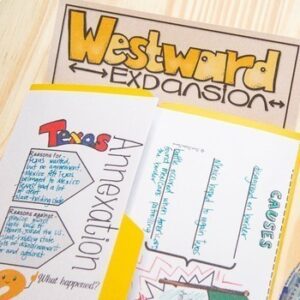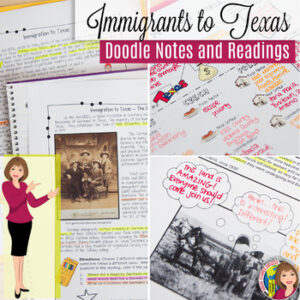Civic Duties and Responsibilities
What are your civic duties and responsibilities? Allow your students to explore this topic with MULTIPLE ACTIVITIES including content readings, Doodle Notes, clue cards, placards, scenarios, and Hexagonal Thinking activity. Your students can work with a partner as they explore the mandatory and voluntary responsibilities of citizenship. This resource will offer you a variety of activities to teach civic duties.
$4.99
Only logged in customers who have purchased this product may leave a review.
Related products
-
‣ DOODLE NOTES FOR TEXAS HISTORY
TEXAS HISTORY LAP BOOK BUNDLE for 7th Grade
$64.92Original price was: $64.92.$49.99Current price is: $49.99. Add to cart -
‣ DOODLE NOTES FOR TEXAS HISTORY
Texas in the Civil War Reading and Doodle Notes Bundle
$9.00Original price was: $9.00.$5.99Current price is: $5.99. Add to cart -
‣ DOODLE NOTES FOR TEXAS HISTORY
Texas Revolution Lap Book and Content Readings for ELL
$7.99 Add to cart -
‣ DOODLE NOTES FOR TEXAS HISTORY
IMMIGRATION to TEXAS READINGS and DOODLE NOTES for ELL or 4th Grade
$4.99 Add to cart

Free Bill of Rights Foldable
Create a mini-book with your students over the Bill of Rights and the Principles of Government. Your students can make this book in under 10 minutes, and then you can use it for review with a variety of games.
Connect on Instagram
COPYRIGHT © 2019 • SOCIAL STUDIES SUCCESS • ALL RIGHTS RESERVED
DESIGNED BY LAINE SUTHERLAND DESIGNS













Reviews
There are no reviews yet.